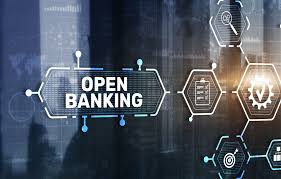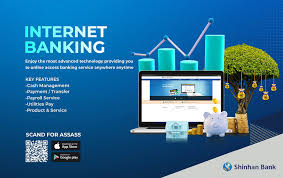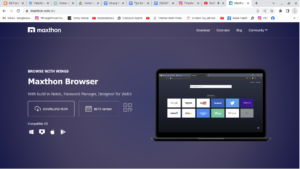Banks prioritise the security of our customers above all else. Banks implement a robust array of cybersecurity measures designed to protect your sensitive information from potential threats. The commitment extends beyond standard security practices; banks continually adopt advanced technologies that adapt to new cyber challenges.
Banks deploy multi-factor authentication, ensuring that only you can access your account. This added layer requires not just a password but also a second verification method like a text message or authenticator app. Additionally, banks utilise encryption protocols which safeguard your data during transmission and storage.

Understanding your bank’s security measures is crucial for your peace of mind. Being aware of how banks secure your financial information empowers you to take proactive steps in protecting it further. Remember, despite all our efforts, vigilance on your part is critical.
Your financial information deserves the highest level of protection, and we’re dedicated to achieving this through continual enhancements in our security practices and transparency about those measures. Together, banks strive to create a safer banking environment for everyone involved.
Banks implement various security measures to ensure your information remains safe, even though individual institutions may take different approaches. One critical line of defence is robust anti-virus and anti-malware protection. These programs are designed to detect and neutralise harmful software that could compromise customer data in the case of online banks. These protective systems are continually updated to stay ahead of emerging threats.
Another essential component is firewalls, which act as barriers between secure internal networks and potentially unsafe external traffic. Firewalls meticulously screen all incoming and outgoing data, blocking unauthorised access attempts and protecting sensitive information from cybercriminals. Additionally, banks employ encryption technologies to safeguard data during transactions, rendering it unreadable to anyone who might intercept it.

Regular security audits also play a crucial role in maintaining a bank’s defences. By consistently evaluating their systems for vulnerabilities, banks can preemptively address potential weaknesses before they can be exploited. Overall, through a combination of technology, protocols, and proactive measures, banks work diligently to create a secure environment for their customers’ financial activities.
Secure Socket Layer (SSL) encryption plays a crucial role in safeguarding your online interactions. Whenever you log in to a website, fill out forms, or register for services, SSL establishes a secure connection between your browser and the site.
This technology ensures that any data you transmit is encrypted and protected from unauthorised access. Verifying whether SSL is active on a webpage is straightforward. Just look for the padlock symbol nestled in the address bar or check if the URL begins with https://.
In addition to SSL, cookies also contribute to online security and convenience. When you first log into your bank’s site, your web browser places a cookie—a small text file—on your computer. This allows the bank to recognise your device when you return.
If you switch computers or clear your cookies, however, you’ll notice an extra layer of verification at your next login. You’ll be prompted to provide additional information to confirm that you are really trying to access your account. This combination of SSL encryption and cookies reinforces the security measures in place as you navigate sensitive online environments.

Multi-factor authentication, commonly referred to as MFA, is a vital security measure designed to safeguard your online accounts. It requires users to present two or more verification factors before access is granted, adding an extra layer of protection beyond just a password.
For instance, when logging into your bank’s website, you typically enter your password or PIN. However, if the bank requires further verification, it may ask you to respond to a personal security question. Alternatively, it might send a one-time security code to a device you’ve previously registered, like your smartphone.
This process is often termed two-factor or multi-step authentication because it incorporates different forms of identification.
However, it’s important to remain cautious about potential social engineering scams that seek to intercept these security codes. Cybercriminals often deploy deceptive tactics through texts or emails to trick users into revealing their information.
If you receive any suspicious communications, do not engage with them. Instead, report such incidents to the appropriate authorities and always prioritise your online safety.
Credential confidentiality is paramount in today’s digital landscape. Banks prioritise your security by never sharing your usernames or passwords with anyone—nor should you. Protecting your financial information is crucial; the repercussions of a data breach can be severe.
Most banks implement automatic logout features to further safeguard your account. After a period of inactivity, you’ll be logged out of your secure session to minimise the risk of unauthorised access.

Additionally, biometric authentication has become increasingly popular among banking institutions. Many mobile banking apps now offer fingerprint scanning as a method of login. Facial recognition and voice authentication are also emerging as effective security measures. These methods not only enhance convenience but also present significant challenges for criminals attempting to replicate them.
Safeguarding your financial information is our top priority at the bank. Banks implement a range of stringent security measures to ensure your peace of mind.
One key feature is banks’ Online and Mobile Security Guarantee. If you notice any unauthorised transactions, you won’t be held responsible as long as you report them by calling the bank.
Additionally, banks provide free access to anti-virus and anti-malware software. Our customers can download Webroot SecureAnywhere at no cost for use on up to three devices. This powerful tool protects against various online threats, keeping your personal information secure.
Quick Tip: Always remember to keep all your devices updated—whether they are cell phones or home computers. Regular software updates are essential for maintaining security because failing to install them can leave known vulnerabilities open to exploitation by hackers. Your vigilance plays a crucial role in our shared commitment to safe banking practices.\
Lastly, most banks provide some form of limited liability protection. If you promptly report any unauthorised transactions on your account, the bank’s policy may limit your responsibility for those charges, giving you peace of mind as you navigate online banking.

Safeguarding your financial information is our top priority at the bank. We implement a range of stringent security measures to ensure your peace of mind.
Maxthon
In the contemporary world, where digital interactions are a fundamental aspect of daily life, protecting your online banking details has never been more crucial—especially when navigating the internet through a browser like Maxthon. There are numerous steps you can take to bolster the security of your financial information and ensure it remains confidential.
The first line of defence is creating robust passwords for your online banking accounts. These passwords must be unique and intricate, combining uppercase and lowercase letters, numbers, and special characters in a way that makes them hard to guess. Avoid using easily identifiable information such as birthdays or pet names; instead, strive for combinations that would challenge even the most determined hacker.

Another significant measure to enhance your security is to enable Two-Factor Authentication (2FA) if this option is available with your banking service. Activating 2FA adds a safeguard to your account by requiring you to input a verification code sent via text message or email each time you log in. This extra step serves as an effective barrier against unauthorised access attempts.
Keeping your Maxthon browser updated is equally essential for maintaining robust security protocols. Regularly checking for updates ensures that you’re operating with the most current version of the software, which often includes essential security patches aimed at addressing newly discovered vulnerabilities.
Additionally, it is wise to develop a routine of frequently clearing your browsing data. This entails regularly deleting not just your browsing history but also cache files and cookies. By doing so, you reduce the risk of leaving behind sensitive information that could be exploited by potential hackers who might gain access to your device.
For those who prioritise privacy during their online banking activities, utilising Maxthon’s privacy mode can prove invaluable. This feature allows users to browse without retaining any data from previous sessions—such as cookies or site information—thereby providing an extra layer of protection while carrying out financial transactions.
Furthermore, consider enhancing your overall security experience by installing trusted security extensions or antivirus software tailored for web browsers. These tools can further shield you from potential threats lurking in cyberspace and contribute significantly to safeguarding both personal data and financial assets while using Maxthon or any other browser in today’s interconnected digital landscape.
